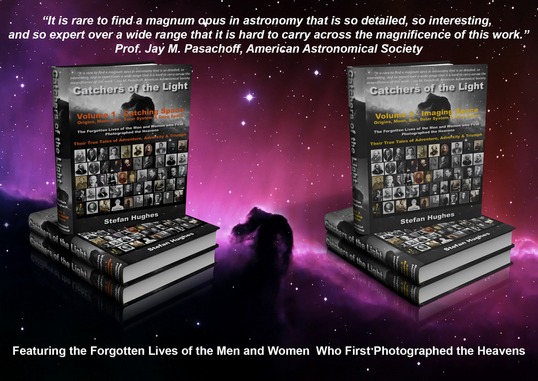'The Welshman'

Born: 21st of January 1829, Groes, Denbighshire, Wales.
Died: 17th of July 1904, Crowborough, Sussex, England
Isaac Roberts was one of the great pioneers of Deep Space Astrophotography. His images of objects such as the Great Andromeda Spiral and the Pinwheel Galaxy in Triangulum are even to this day masterpieces, which many a modern imager would be proud to have taken. It was Roberts who showed for the very first time what many of these objects truly looked liked. He took at least 2485 photographic plates during the years 1883 to 1904.
Isaac Roberts was a Welshman all his life even though he spent the majority of it in England. He both spoke and wrote the language of his birth fluently. His family were also Welsh through and through, They had farmed the land around Denbigh for as long as anyone could remember. Yet Isaac Roberts was destined not to be a farmer like his father and his father before him. Instead he was to become one of the greatest pioneers of Astrophotography, whose images of the heavens astounded the world.
On the 30th of September 1880, the New York Doctor, Henry Draper (1837-1882) obtained a photograph of the ‘Great Orion’ Nebula (M42) and in doing so became the first person to successfully image a Deep Space Object (DSO). However despite the magnificence of this great achievement the nature of these ‘nebulae’ remained elusive and even their true appearance was in many cases unknown, appearing as mere smudges in the eyepieces of every telescope irrespective of its size.
From 1883 onwards until his death in 1904, Isaac Roberts began taking photographs of almost every well known Deep Space Object visible from his observing locations. In many cases he was the first person to image a particular object and as such it was his eyes which saw the fainter and more elusive of them as they truly are, ahead of any other person who had ever lived. His list of ‘firsts’ is truly impressive and includes such famous objects as - ‘Great Andromeda Spiral’ (M31), ‘Dumbbell Nebula’ (M27), ‘Great Hercules Cluster’ (M13), ‘Bodes Galaxy’ (M81) and ‘Sombrero Hat Galaxy’ (M104).
On the monument erected to his memory by his widow, Dorothea Klumpke (1861-1942) in Flaybrick Cemetery, Merseyside, England can be seen engravings of two of his favourite DSOs - the ‘California’ nebula (NGC 1499) and the ‘Great Andromeda Spiral’ (M31). At the time of his death in 1904, Roberts was aware that certain nebulae like NGC 1499 were made up of glowing gas whilst spiral nebulae such as M31 were composed of stars
However, what he did not know was that many of the ‘nebulae’ he captured were in fact separate ‘Island Universes’ lying millions of light years beyond the boundaries of our own Milky Way star system. It was Robert’s images of DSOs that were to be of great assistance in the long process which would ultimately lead to the understanding of their nature. This was Isaac Roberts’ legacy to Astronomy and was left to those who followed him, most notable of which would include the great Edwin Powell Hubble (1889-1953).
Let us now tell the story of his life which began amid the sheep, choirs and sermons of the Vale of Clwyd, Northern Wales in the years just before Queen Victoria ascended the throne...
To read more on his life and work read the eBook chapter on Isaac Roberts: or buy the Book 'Catchers of the Light'.

The 'Great Andromeda Spiral' (M31) taken by Isaac Roberts in 1888, 20-inch reflector

Buy the eBook or Printed Book at the 'Catchers of the Light' shop.